
 |
 |
 |
 |
 |
 |
 |
 |
 |
 |
 |
 |
Games O' Canada - The Mad Dash
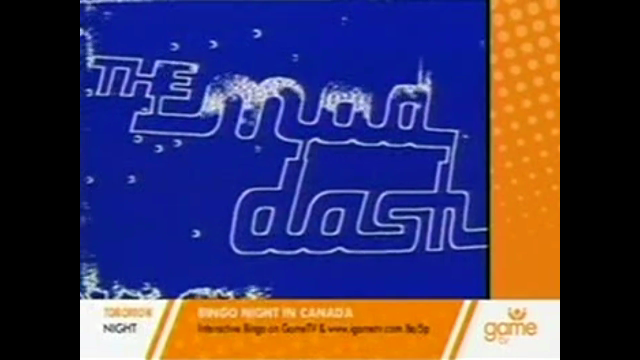
CTV: 1978-1985
Hello Game show fans and welcome to the third instalment of the Games O’ Canada.
I’m Marc Power. So last time we covered a
foreign import that was watchable but ultimately a big disappointment: the
Canadian version of Supermarket Sweep. One of Sweep’s biggest issues was a lack
of variety. The show we’re going to talk about this month, had lots of variety
and despite a low budget, it was quite enjoyable and became one of the most
popular shows from North of the border. Ladies and Gentlemen I give you: The Mad
Dash
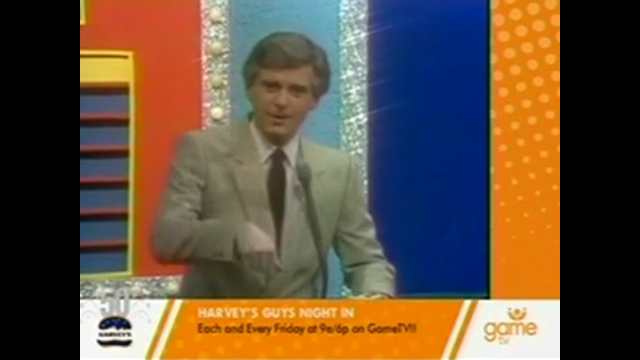
The Mad Dash was a very popular long running show that ran for 7 years on
CTV and viewable to the Northern United States. The host was Montreal-based
singer and French Television personality the late great Pierre Lalonde.
Pierre ranks up there among the greatest Canadian hosts of his time,
energetic, friendly, funny and genuine and you can tell he loved hosting this
show and his love for the show only showed even more when contestants won even
if it wasn’t always that much. Along for the ride is announcer Nick Hollenreich,
a CFCF-TV staff announcer and he too did great work. Interacting with Pierre
often and giving great energy with every prize plug and every cry of “start your
dash!” when calling down contestants. The Mad Dash was produced by Sidney M
Cohen and his production company Super People Productions. Sidney incidentally
hosted the unaired pilot episode and the sequence during the intro of the two
people running up and down the board was taped during said pilot. Unfortunately,
as per the company policy at the time, most episodes were destroyed and only
about 13 are known to still exist on tape all of which have aired in reruns on
GameTV.
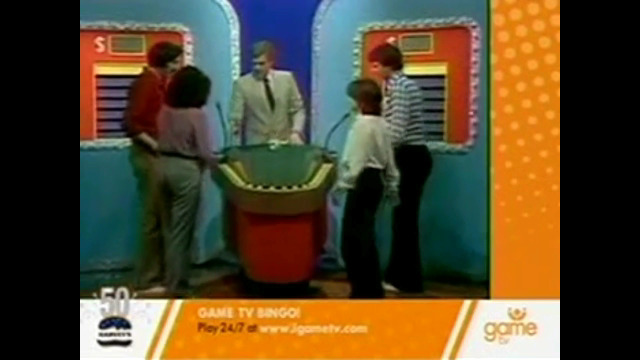
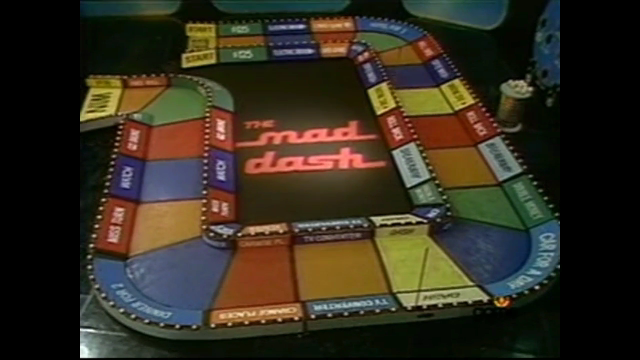
The Mad Dash plays like a giant board game and has been compared in some
circles to the 50s US classic Video Village. 2 teams of two play, One player
rolls the die and answers questions, while the other is the “dasher” and acts
like the team’s “token” on the game board. As Pierre often said “There are
squares to move you forward, squares to move you back, squares that win you cash
& prizes”. A multiple choice question is
asked the first player to buzz in with a correct answer gets to roll the die and
move their partner down the board. Interestingly, a wrong answer doesn’t give
their opponent a freebie instead if they both get it wrong the question is
tossed and another one is asked. The die is a standard one except the 6 is
replaced with a dollar sign, if the contestant rolls this a $10 bonus is added
to their bank and the contestant gets another roll, later in the run, doing so 3
times in a roll won an additional $50 bonus. Based on where the dasher lands,
this determines the team’s fate. Ultimately, the first dasher to land EXACTLY on
the win space at the end of the board wins the game and all the cash & prizes
their team accumulated. Teams stay on the
show until they lose twice.
Several different squares appeared on the
game board, including cash amounts from $20-$250 and various prizes. If the
dasher landed on one of these it was added to their bank. The other squares
worked as follows:
Roll forward:
essentially giving them a free turn,
Roll Back: meaning they would move back
the roll of the die,
Roll Over:
They would move their opponents forward the roll of the die.
Return
prizes: self explanatory
Go Broke: the team loses their cash but not their
merchandise. Cause once you buy a prize it’s yours to keep....sorry wrong show.
There were also a variety of mini-games:
Brains or Brawn: The
dasher had a choice of “brains” or “brawn”. If they chose “brains” they would be
asked a question a correct answer earned the right to roll again, a wrong answer
meant they would move backwards. If they
chose “Brawn” they would have to complete a small stunt to either move forward
or roll back if they failed. The only issue I have with this is on the premiere
episode one stunt asked the contestant to unpeel 2 oranges in 15 seconds using
only her fingers. I’m not sure but I think that’s impossible......
Thin
Ice: The dasher is asked a true or false question, a correct answer earns the
right to steal one of their opponent’s prizes, a
wrong answer means their opponent can steal one of theirs. An interesting twist
is that if their opponents have no prizes, the team can instead move forward
anywhere from 1-5 spaces at a cost of $10 per space. This was later altered to
Dash a correct answer moving them forward a roll of the die, a wrong answer
moving them back.
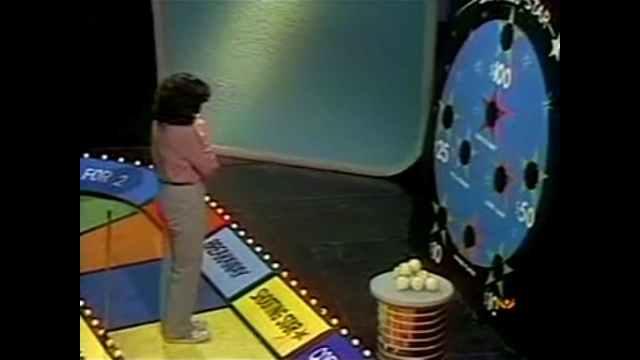
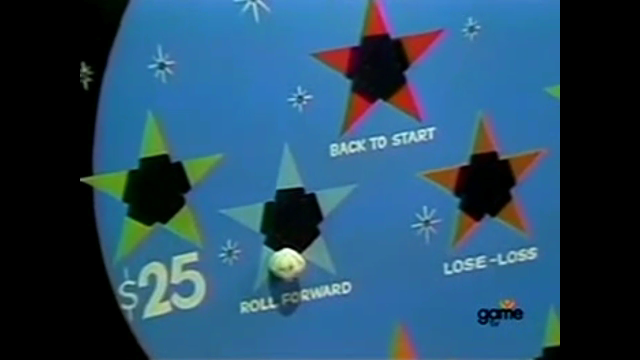
Shooting Star: The Dasher gets to throw 3 balls at a board, Depending on
where the ball lands, that’s what they win. There were cash amounts from
$10-$100, Roll Forward & “Lose Loss”. Hitting this meant that if the team
already had a loss against them, this loss would be erased and the team would
keep this whether they won or lost that game.
Bean Bag: (or Bean Bag
competition as Pierre called it) was similar in that instead the dasher would
throw up to 3 bean bags at targets and would have to hit the target twice to win
the prize.
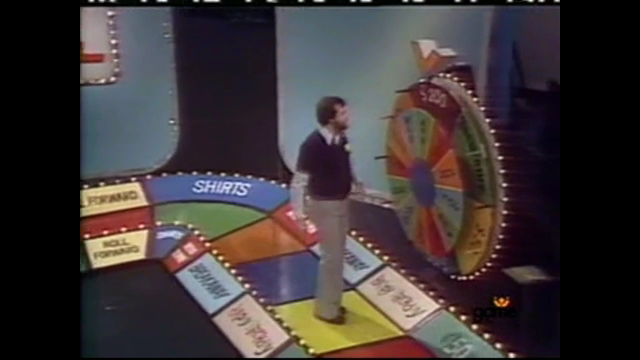
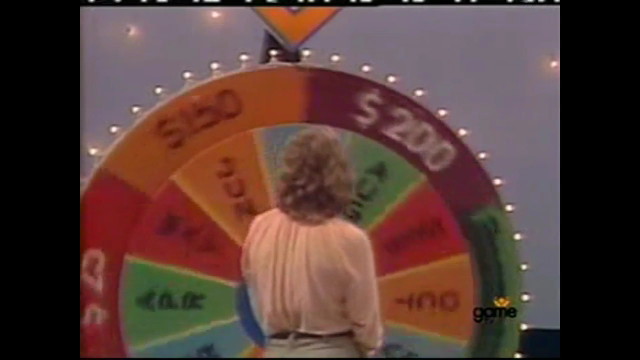
Happy Birthday: The contestant spun 2 wheels (similar in design to the
Melody roulette wheel from Name that Tune) on the inner wheel where the 12
months of the year, the outer wheel had dollar amounts from $25-$200 and the
insurance policy. If the inner wheel stopped on the dasher’s birth month the
money was doubled. The insurance policy could be used later in the game should
the team land on go broke or return prizes to protect them.
The Mad
Darts: The Dasher threw long darts (more like arrows) at a board. Before
throwing they would choose to either play for themselves or their opponents, The
reason: one spot on the board was “back to start”
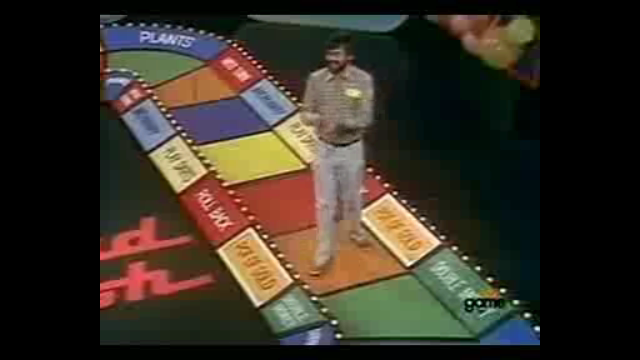
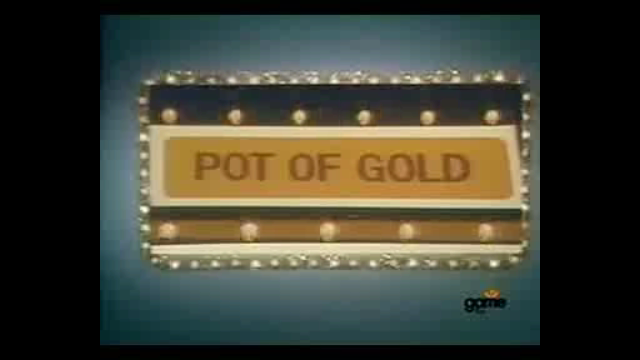
Pot Of Gold: An escalating jackpot of prizes. If a team won this, it was
theirs to keep regardless of the outcome of the game and when won it was
replaced by another prize.
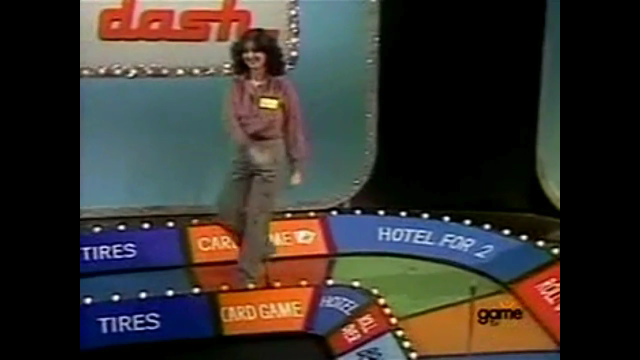
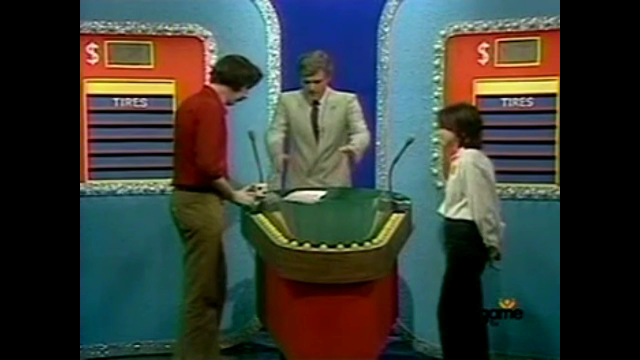
Card Game: The contestant chooses a card from a standard deck, and gets to
move their dasher the number of spaces equal to the face value of the card (aces
counted as 1) but drawing a face card, meant they would have to roll back.
Dice Game: The contestant is given a 2nd die and rolls them both,
moving forward the total of both dice. A dollar sign means $10 and moving
forward the number on the other die. 2 dollar signs and the team wins a $100
bonus.
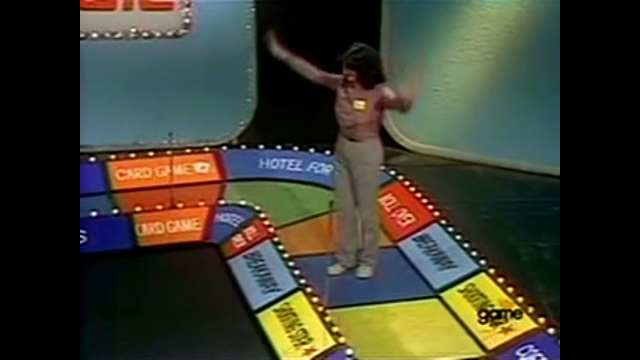
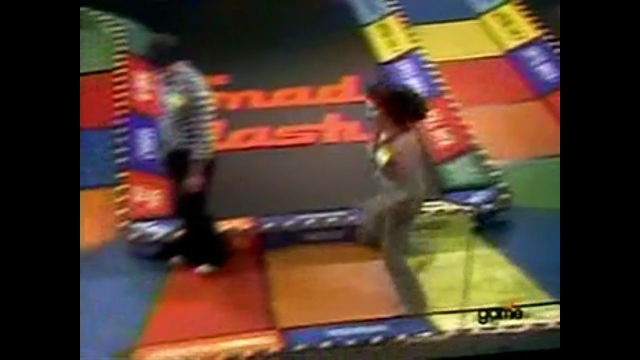
Breakaway: Quite possibly the most famous space on the board. The team would
roll the die to determine how many seconds they would have. The dasher would
have this time to freely run down the board as far as they could, rolling a 5
almost always lead to a win.
There were others too like Ring Toss and
Play darts but footage doesn’t exist of game play of those games.
As I said, to win a team
must land exactly on the win space, if the roll goes over, the dasher proceeds
to the win and goes back the remaining moves, This is kinda funny when the team
is 1 space away on free roll and rolls a 2 putting them back on free roll and
doing what Pierre calling the “Irish Jig”.
If a team won the game without
any prizes, They would be given one free roll of the die and win a payoff of $10
times the number rolled, if they rolled the dollar sign it would mean a $100
win. The only episode in existence when this happened saw the team win a
whopping $10. That’s cheap even for a Canadian show from this era. I would think
there’s n reason they couldn’t have offered some sort of house minimum of say
$50 or a dinner for two.
Originally there was no limit to how many games
a team could win, and any team that won 7 games won the Lucky 7 jackpot, a prize
jackpot and $250 cash with a total value of $2,500.
Later on, the lucky
7 jackpot was eliminated and teams were limited to 10 wins before being retired.
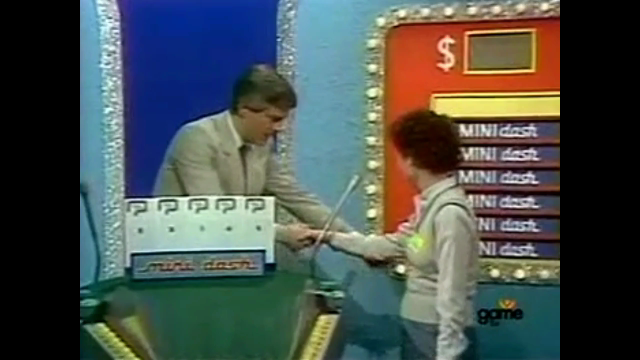
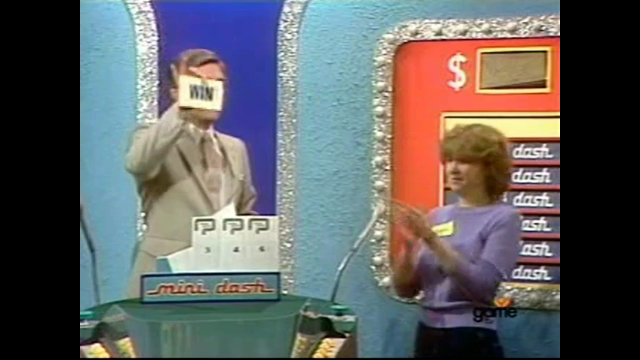
Initially, Many episodes featured an audience game called the “mini dash” an
audience member was called down and would be asked up to 3 questions. Getting 2
out of 3 right won a prize. This was tweaked later in the run, where the player
would choose from 5 envelopes, inside 1 was an automatic win, inside 1 was an
automatic loss and in the other 3 were questions and the game would be played
the standard way.
The biggest problem with the show was the budget, Not
uncommon for most winning couples to pocket less than a $100 the bigger wins
were usually no more than a few hundred dollars. But the prizes and eve the set
did start getting better as the show grew more and more popular. I guess the
reason for the popularity is that the game was pretty solid and was light
hearted enough that it didn’t need to be played for huge prizes. It was like
“the little show that could” and that was enough to carry it through a 7 year
lifespan.
It certainly didn’t hurt that the show had a fantastic host in
Pierre Lalonde. Sadly, Parkinson’s Disease claimed Pierre’s life in 2016 and he
is sorely missed.......
Next month, We cover to Alex Trebek’s shame,
The disaster that was Pitfall. Sorry, Alex but it had to come up eventually.
Until Next time, Merci Beaucoup Pierre, Tu nous manque. (English Translation:
Thank You Pierre, we miss you.)
Have any questions about the site? Submit them to us via our Facebook page, our Twitter, and through e-mail. We'll be sure to answer them to the very best of our ability.
(c) 2009-2018 - A CQS Production.
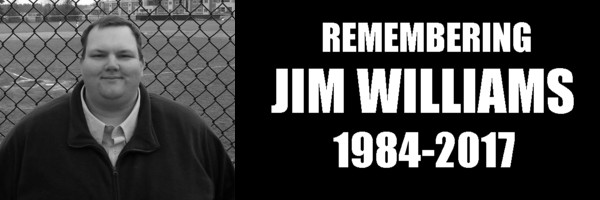
Help GSG pay some bills!